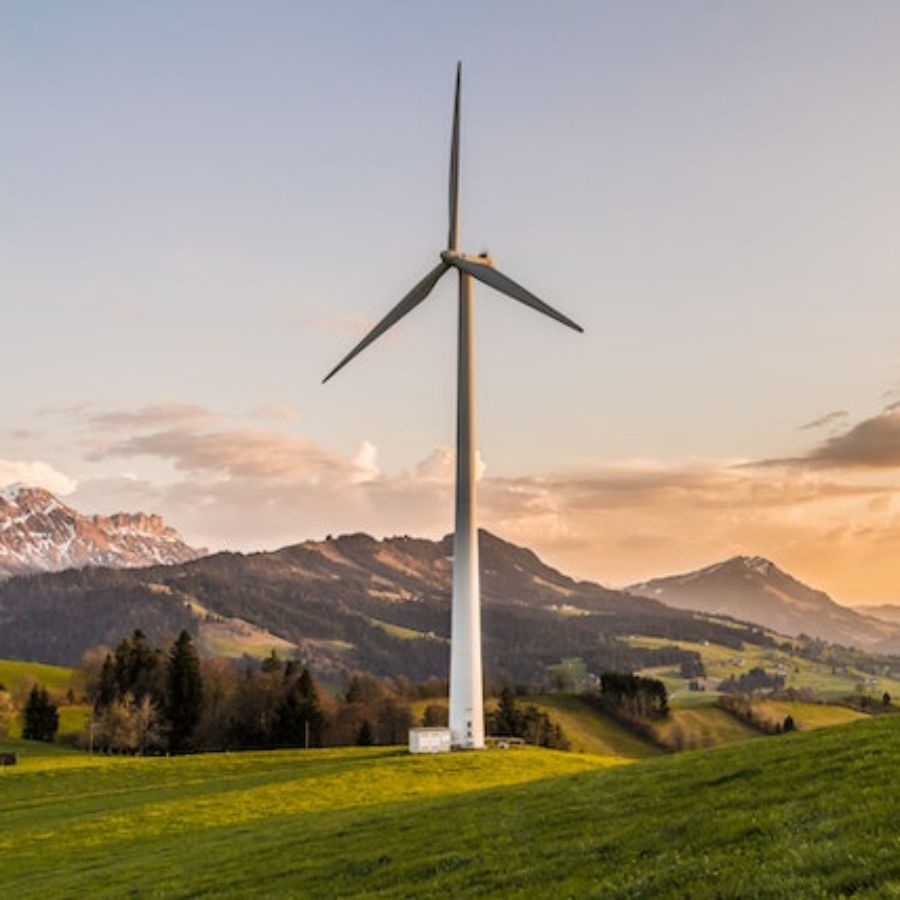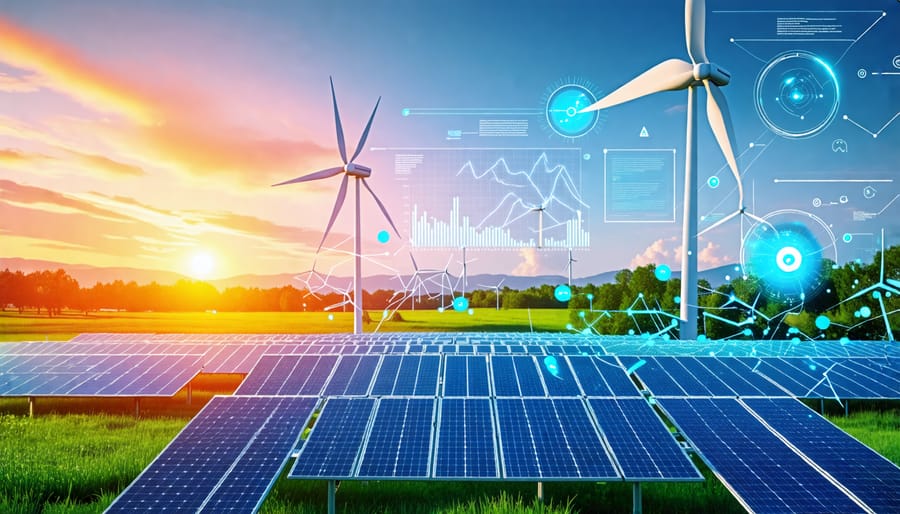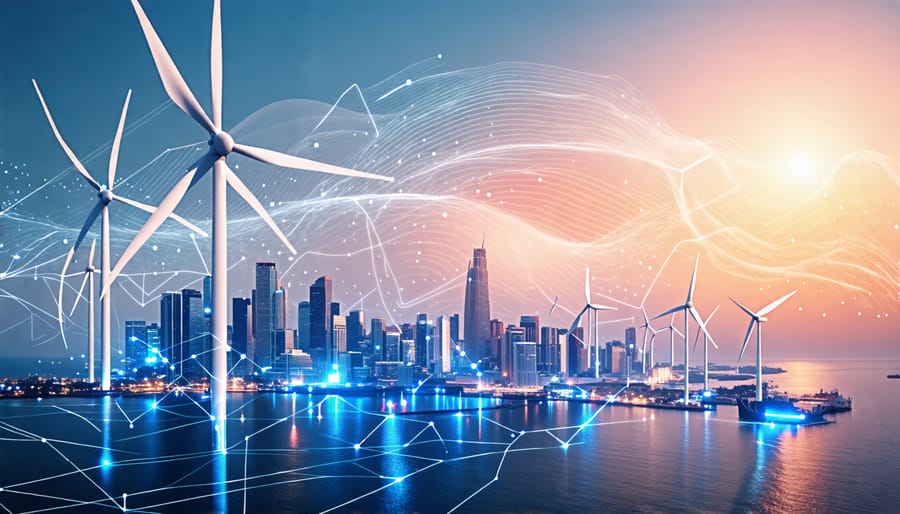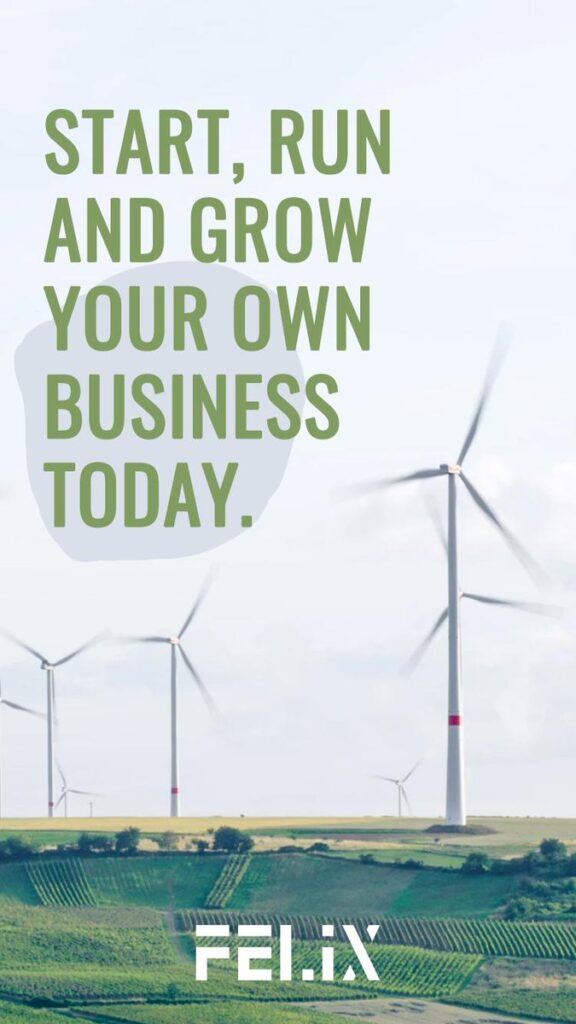In the realm of sustainable energy, wind turbines have become pivotal players, converting the kinetic force of wind into usable electricity. This article delves into the multifaceted world of wind energy, examining the myriad factors that determine a turbine’s energy output. From the nuances of wind speeds and rotor diameters to the strategic placement of these turbines, every detail plays a role in optimizing energy production. For enthusiasts and professionals alike, understanding the conversion between different energy units is essential. The Watts to Kilowatt Hours Conversion Calculator can be particularly useful in translating the raw power harnessed by wind turbines into more familiar energy metrics. Dive in with us to explore the potential and intricacies of wind energy and its pivotal role in our sustainable future.
This article will discuss the fascinating world of wind energy and explore the factors influencing a wind turbine’s energy production.
Harnessing the Power of Wind Turbines
Onshore wind energy has gained prominence for its role in sustainable power generation. In addition, onshore wind turbines operate on a fundamental principle: converting the wind’s kinetic energy into mechanical energy. It then transforms into electrical energy. The components of these turbines, such as rotor blades, hubs, gearboxes, generators, and towers, work in harmony.
As the wind blows, rotor blades spin, transmitting motion through hubs and gearboxes to generators, producing electricity. For offshore wind turbines, the technology is similar but adapted for ocean environments. The taller towers and extended rotor blades of both onshore and offshore wind turbines enable them to capture more wind energy. Moreover, it results in greater energy production and furthering our clean energy objectives.
Factors Affecting Energy Production

Several key factors influence the amount of energy a wind turbine can produce:
Wind Speeds
Optimizing energy production hinges on wind speed dynamics, crucial for both onshore and offshore wind power. Wind turbine blades are designed with precision, necessitating a minimum wind speed, the “cut-in” speed, to initiate electricity generation. Furthermore, as wind intensity escalates, energy output surges, a trend observed in most onshore wind turbines. However, a safeguard exists—the “cut-out” speed—which mandates turbine shutdown to avert damage from excessive speeds.
Manufacturers craft turbines within a “rated” wind speed range, ensuring operational efficiency. Besides, this adaptive approach holds for offshore wind power too, albeit with adjustments for oceanic conditions. Thus, comprehending wind speed intricacies is also pivotal for harnessing the fullest potential of wind turbines and driving sustainable energy generation.
Rotor Diameter and Swept Area
Generating electricity through wind turbines is intricately linked to their design, particularly the rotor diameter. In various types of wind turbines, larger rotor blades become synonymous with heightened energy production. The principle is simple: a more extensive rotor translates to a larger swept area—an expanse through which wind energy is captured.
It’s no wonder that wind turbines boasting expansive, impressive blades span the landscape. These large blades effectively harness wind energy, making them a common sight. The correlation between rotor size and energy generation holds across wind turbines. Again, the next time you wonder how much electricity a wind turbine can generate, remember the pivotal role that rotor diameter. It is vital to consider swept area play in maximizing renewable energy output.
Wind Turbine Capacity
Understanding how wind turbines work entails grasping the concept of capacity. Moreover, a wind turbine’s capacity measured in megawatts (MW) signifies its peak power generation potential under optimal circumstances. While a higher-capacity turbine has the potential to produce more energy, the efficiency of this energy conversion hinges on the unique wind resource present at a given location.
Offshore wind farms, in particular, leverage the expanse of open waters to accommodate higher-capacity turbines. However, the efficiency of these turbines links to the prevailing wind speeds and conditions specific to that offshore environment. So, capacity promises elevated energy production. In addition, the interplay between capacity and location-dependent wind dynamics underscores the complexity of harnessing wind power efficiently and sustainably.
Wind Turbine Placement
The strategic placement of a wind turbine is a cornerstone of wind power to generate electricity. Geographical nuances, such as hills, valleys, and coastal expanses, create diverse wind resources that influence the optimal siting of turbines. Wind farms, composed of multiple turbines, capitalize on these geographical features.
Equally important, by identifying locales with reliable, consistent, and potent winds, a wind turbine can be sited to maximize energy production. Coastal regions, benefitting from unobstructed airflow and elevated landscapes, harnessing wind acceleration, become prime spots for wind power installations. The art of turbine placement exemplifies the intricate fusion of natural dynamics and cutting-edge technology. It also showcases how our drive for clean energy harmonizes with the environment. Wind turbines stand tall in this dance between nature and innovation, shaping our sustainable energy future.
Altitude and Air Density
Recognizing the impact of altitude and air density is a fundamental understanding of how wind turbines work. Wind speed rises as we ascend in altitude, a phenomenon integral to wind power generation. Air density, too, plays a pivotal role. In addition, it influences the kinetic energy carried by the wind. At greater heights, turbines in wind farms, whether on land or offshore, capitalize on these factors.
The elevated positioning allows access to more potent winds and facilitates heightened energy production. Offshore wind farms, situated over expansive bodies of water, also benefit from strong and more consistent winds. By tapping into the synergy of altitude, air density, and turbine technology, we channel the forces of nature into sustainable energy. Furthermore, it exemplifies our commitment to greener horizons.
Government and Educational Insights
Government and educational institutions help to study, promote, and regulate wind energy. These sources provide valuable insights into the energy production of wind turbines.
According to the U.S. Department of Energy (DOE), the average capacity factor of wind turbines in the United States has been increasing steadily. Again, the capacity factor is the ratio of the actual energy produced by a turbine to the maximum possible energy it could generate if it operated at full capacity all the time. In recent years, the DOE reported capacity exceeding 40%. Also, it means that wind turbines produce energy at a substantial portion of their maximum potential. This data underscores the advancements in turbine technology and the selection of better wind farm locations.
Moreover, the National Renewable Energy Laboratory (NREL), a research arm of the DOE, offers insights into the energy potential of wind resources across different regions. Their wind resource maps also provide valuable information to energy developers, policymakers, and the public. Besides, they aid in prime location identification for wind energy projects.
In Europe, the European Environment Agency (EEA) contributes to wind energy research by providing data on the growth of wind power capacity and its contribution to electricity generation. Again, their reports highlight the significant progress in harnessing wind energy and reducing carbon emissions.
Real-world Examples
Denmark’s Horns Rev 3 offshore wind farm is one remarkable example of wind energy’s potential. Again, this wind farm comprises 49 turbines, each with a capacity of 8.3 MW. The wind farm can also produce approximately 1.7 TWh of electricity annually, enough to power around 425,000 Danish households.
Another notable project is the Gansu Wind Farm in China, one of the largest wind farms in the world. With a capacity of over 6,000 MW, this wind farm spans vast stretches of the Gansu province. Furthermore, it showcases China’s commitment to renewable energy generation.
Conclusion
Wind turbines are elegant symbols of sustainability and powerhouses of renewable energy production. The energy a wind turbine produces depends on wind speeds, rotor size, turbine capacity, and location. Government agencies and educational institutions play vital roles in monitoring and promoting wind energy development. It provides essential data for energy planners and policymakers.
As technology advances and our understanding of wind dynamics deepens, wind turbines play an increasingly significant role in our global energy transition. Whether it’s the rolling hills of Denmark or the vast landscapes of China, wind turbines stand as a testament to humanity’s pursuit of a cleaner and more sustainable future.





